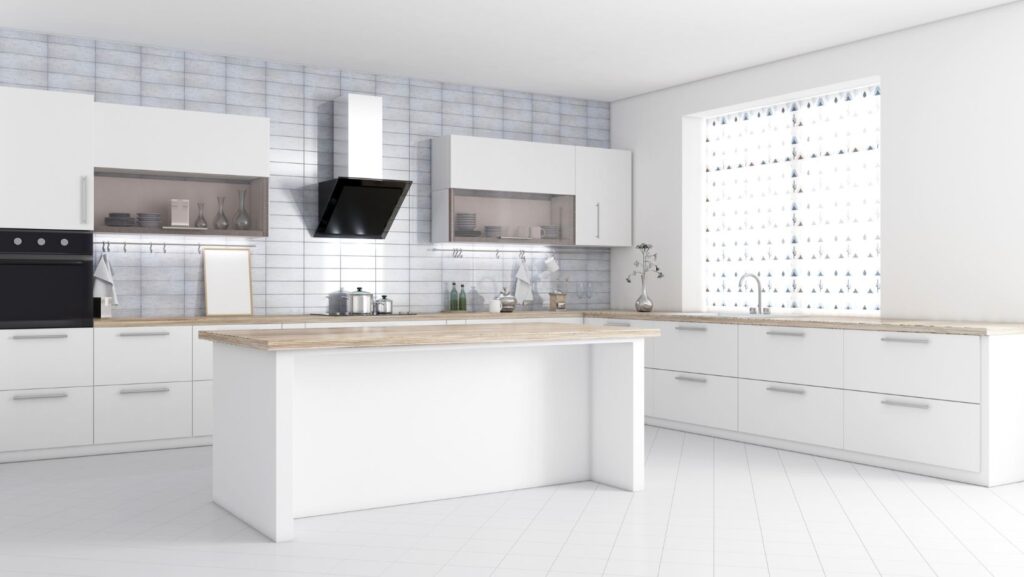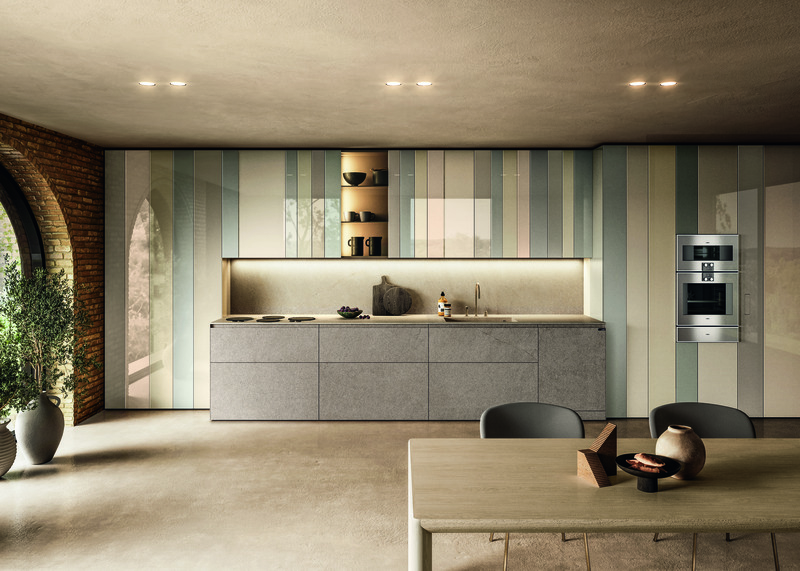The kitchen has evolved far beyond its original function as a place to cook meals. Today, it stands as a central hub of the home, combining practicality with a refined aesthetic. Contemporary kitchens increasingly embrace minimalism, where clean lines, balance, and sophistication create a timeless appeal. In this design approach, every detail counts, and simplicity becomes the foundation for both elegance and functionality.
The Essence Of Minimalism In Kitchen Design
Minimalism in kitchen interiors is about clarity and focus. Instead of overcrowding a space with decorative elements, this style highlights balance, functionality, and the beauty of pure form. Straight lines, uncluttered surfaces, and well-structured layouts establish a sense of calm and order.
This design language does not mean living with less but rather elevating the essentials. Every element is intentional. By prioritising quality over quantity, minimalism in the kitchen offers a serene environment that is highly practical and visually impactful.
Materials And Finishes That Shape The Aesthetic
The character of a minimalist kitchen is defined by the careful selection of materials. Wood, metal, and glass form the essential trio that gives depth and structure to the contemporary aesthetic.
Wood introduces warmth and authenticity, offering natural tones that ground the space. Metal adds strength and precision, often expressed through sleek details, frames, or fixtures. Glass brings a sense of lightness and transparency, balancing the solidity of other elements.
The finishes of these materials also play a crucial role. Matte surfaces convey a quiet sophistication, while polished metal or glass elements add subtle highlights without overwhelming the simplicity. When combined thoughtfully, these contrasts create depth and interest while preserving the clean aesthetic.
Light And Space: Amplifying The Impact Of Clean Lines
Lighting is essential in enhancing minimalist design. Natural light opens up the space, accentuating clean lines and making surfaces appear more expansive. Large windows, glass partitions, or open layouts help create a visual continuity between the kitchen and the rest of the home.
Artificial lighting also plays a defining role. Pendant lights above the dining area, recessed lighting along ceilings, or under-cabinet solutions all contribute to layering the illumination. These details not only enhance functionality but also highlight the purity of the design.
Minimalist kitchens often embrace open-plan layouts, seamlessly blending into dining and living spaces. The absence of visual barriers reinforces the sense of spaciousness, while the focus on straight lines and streamlined forms maintains clarity. Here, even practical elements like modern kitchen cabinets are designed to merge seamlessly into the architecture, ensuring storage and organisation without compromising style.
Functionality meets refined aesthetics
A contemporary minimalist kitchen is not only about aesthetics – it must respond to the practical needs of everyday life. Storage solutions, flexible layouts, and efficient workflows are fundamental to its success. The difference lies in the way these features are concealed within elegant design choices.
Modular layouts allow the kitchen to adapt to evolving lifestyles, whether for family meals, entertaining, or professional work-from-home settings. Integrated appliances and innovative storage systems preserve the clean aesthetic while maximising utility.
The Contemporary Kitchen As A Statement Of Style
Minimalist lines have the power to create maximum impact in the heart of the home. By combining wood, metal, and glass with thoughtful finishes and carefully considered layouts, the contemporary kitchen becomes both functional and elegant.
More than just a cooking space, it transforms into a stage for daily life: a place where design and practicality coexist effortlessly. The minimalist aesthetic not only delivers timeless elegance but also ensures adaptability, efficiency, and comfort. In this way, the contemporary kitchen embodies a modern lifestyle, making simplicity the ultimate expression of sophistication.
A Language For Better Living: The Lago Method Between Modularity, Aesthetics And Sustainability
In a constantly changing world, where the home is regaining a central place in daily life, LAGO does not simply design furniture but develops a true language of living. Its collections are not mere decorative objects: they are tools conceived to translate values, needs and aspirations into tangible spaces.
Every line, every module and every constructive choice reflects a clear conviction: living is not just about aesthetics, it is also a cultural act. Founded in 1976 yet heir to artisanal know-how dating back to the late 19th century, the company has evolved without ever losing its identity.
The arrival of the fourth generation in 2006 marked a turning point, transforming a family vision into a global strategy. Internationalisation, digitalisation and sustainability have become the pillars of a project now expressed in more than twenty countries, with a sober and instantly recognisable identity.

At the heart of this philosophy lies modularity, regarded as a genuine cultural code. Rather than imposing fixed solutions, LAGO builds its projects with those who live in the spaces. Kitchens, tables, and sofas are conceived as open, flexible and durable architectures, capable of evolving with time and use. Each collection stems from the observation of everyday behaviours and aims to improve real life, rather than follow fleeting trends.
This approach is combined with a production model attentive to the future: materials selected for their durability and recyclability, an industrial process guided by the circular economy, rigorous resource management and energy efficiency. The objective is clear: to produce less but better, creating tangible and lasting value. Technology complements this model through the in-house developed 3D configurator; an intuitive tool enabling anyone to simulate and personalise their project in real time.
With more than 500 points of sale worldwide, LAGO brings Italian design into diverse contexts – private residences, hotels, offices and retail – while preserving a strong identity. In an era dominated by the pursuit of novelty, the brand champions continuity and authenticity: its creations do more than furnish a space, they accompany it over time and give living environments profound and lasting meaning.
